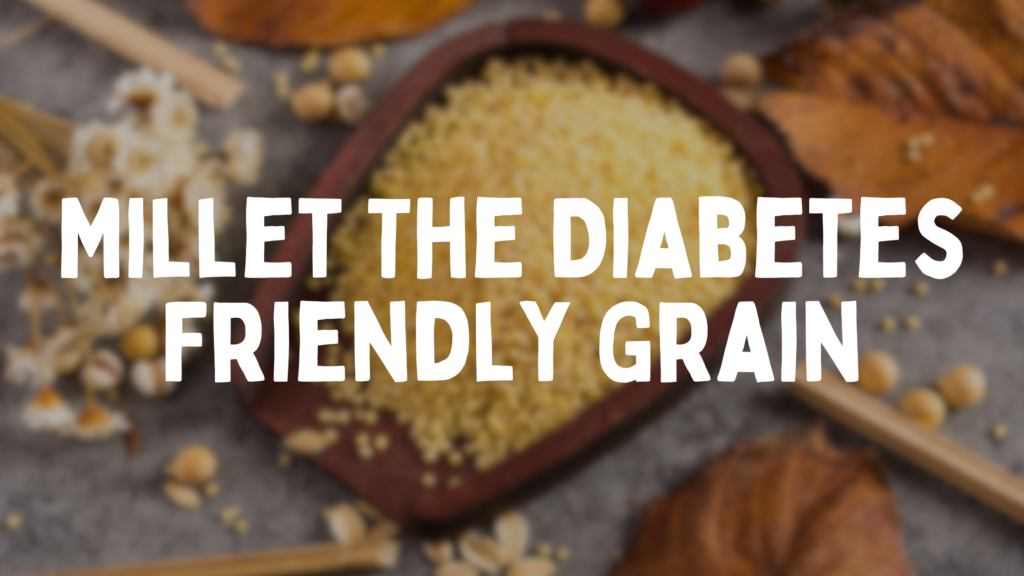
Introduction:
In the realm of diabetes management, dietary choices play a crucial role in maintaining blood sugar levels and overall health. Amidst the array of grains available, millet stands out as a diabetes-friendly option, offering a range of benefits for those managing the condition. In this blog post, we’ll delve into the potential 5 benefits of Millet for diabetes, exploring its nutritional properties and how it can aid in blood sugar control.
Low Glycemic Index (GI):
Millet boasts a low glycemic index, which means it causes a gradual rise in blood sugar levels compared to high-GI foods. This slow and steady release of glucose into the bloodstream can help prevent spikes and crashes, making millet an excellent choice for individuals with diabetes. By incorporating millet into meals, those managing diabetes can better regulate their blood sugar levels throughout the day.
High Fiber Content:
Fiber is a key nutrient for diabetes management, as it helps slow down the absorption of sugar and improves insulin sensitivity. Millet is rich in dietary fiber, including both soluble and insoluble fibers, which promote digestive health and contribute to satiety. By increasing feelings of fullness and preventing rapid fluctuations in blood sugar, millet can support individuals with diabetes in maintaining stable glucose levels.
Nutrient-Rich Profile:
Despite its low glycemic index, millet packs a nutritional punch, offering an array of vitamins and minerals essential for overall health. It contains significant amounts of magnesium, a mineral that plays a crucial role in glucose metabolism and insulin action. Additionally, millet is a good source of protein, which can help stabilize blood sugar levels and promote feelings of fullness, aiding in weight management—a key aspect of diabetes care.
Gluten-Free Option:
For individuals with both diabetes and celiac disease or gluten sensitivities, millet serves as an excellent gluten-free alternative to wheat and other grains containing gluten. Its naturally gluten-free composition makes it safe for those with gluten intolerances to incorporate into their diet, providing a variety of meal options without compromising on taste or nutrition. To know if millets is superfood or passing Fad?- Click here.
Versatile and Delicious:
Beyond its health benefits, millet is incredibly versatile in the kitchen, offering endless possibilities for creating delicious and nutritious meals. It can be used in various dishes, including salads, soups, porridges, and even baked goods like bread and muffins. Its mild, nutty flavor pairs well with both sweet and savory ingredients, making it a favorite among those looking to add variety to their diabetic-friendly meals.
Conclusion:
Incorporating millet into a diabetes-friendly diet can offer a host of benefits, from helping to regulate blood sugar levels to providing essential nutrients for overall health. With its low glycemic index, high fiber content, and versatility in cooking, millet is a valuable addition to the meal plans of individuals managing diabetes. By embracing the potential of this nutritious grain, those with diabetes can take proactive steps towards better blood sugar control and improved well-being.
